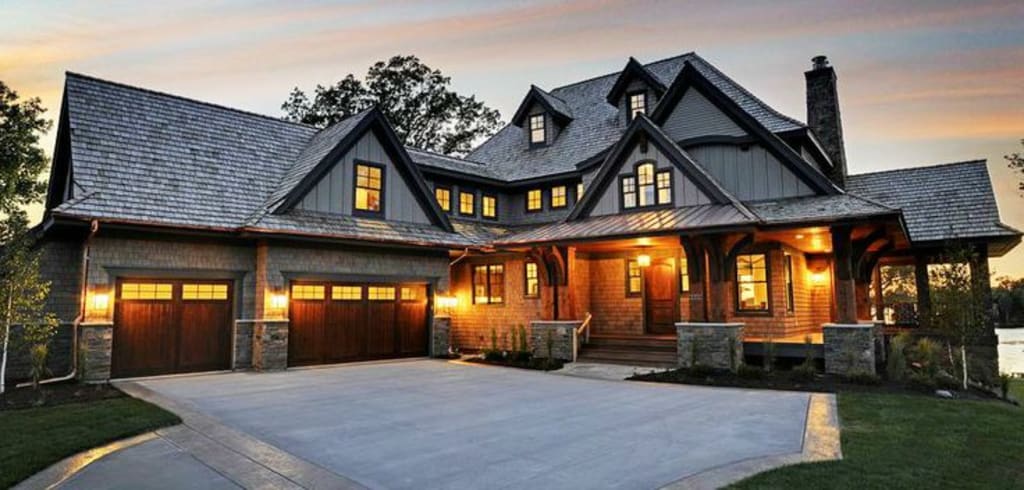
A "good luck house" is a type of architectural feature that is typically found in traditional Chinese homes and buildings. It is a small structure or room that is often located at the front or main entrance of the building and is believed to bring good luck and prosperity to the residents.
The origins of the good luck house can be traced back to the Ming and Qing dynasties in China, where they were commonly found in the homes of wealthy and powerful individuals. They were also present in temples and other religious buildings, as well as in the homes of common people. The good luck house is often seen as an embodiment of the traditional Chinese concept of feng shui, which is the belief that the arrangement and layout of a building can affect the flow of energy and bring good luck to the inhabitants.
The good luck house typically features intricate carvings and decorations, such as dragons, phoenixes, and other auspicious symbols. These symbols are believed to bring good luck and ward off evil spirits. The entrance of the good luck house is typically adorned with a pair of large wooden doors, which are often painted in bright colors and feature intricate carvings of dragons and other auspicious symbols. The doors are usually open during the day to allow positive energy to enter the building, but are closed at night to keep out negative energy.
Inside the good luck house, one can find various items and symbols that are believed to bring good luck and prosperity. These may include statues of gods and goddesses, incense burners, and other religious artifacts. Some good luck houses also contain a small altar where offerings can be made to the gods and ancestors.
The good luck house is not only used for spiritual and religious purposes, but also for social and practical purposes. In many traditional Chinese homes, the good luck house serves as a welcoming area for guests and visitors, where they can take off their shoes and prepare for the visit. It also serves as a place for storing household items and as a place for daily rituals such as praying and burning incense.
Nowadays, good luck houses are still found in many traditional Chinese homes and buildings, but they have also become a popular architectural feature in many modern buildings and homes. They are also becoming more common in non-Chinese communities around the world, as people become more interested in traditional Chinese culture and the principles of feng shui.
In conclusion, the good luck house is a unique architectural feature that is deeply rooted in Chinese culture and tradition. It is believed to bring good luck and prosperity to the residents and is often seen as an embodiment of the traditional Chinese concept of feng shui. With its intricate carvings and decorations, it serves as a welcoming area for guests and visitors, a place for daily rituals and a place for storing household items. As the interest in traditional Chinese culture and feng shui increases, the good luck house is becoming more popular in non-Chinese communities around the world.
There are many houses around the world that could be considered the "best" depending on one's personal preferences and criteria for what constitutes a great house. Some notable examples of luxurious and architecturally impressive houses include:
BEST HOUSE IN THE WORLD
The Hearst Castle in California, USA, which was built by newspaper tycoon William Randolph Hearst in the early 20th century and is known for its grandeur and opulence.
The Palace of Versailles in France, which was built in the 17th century as the residence of the French royal family and is famous for its ornate architecture and beautiful gardens.
The Villa Savoye in France, which is considered a masterpiece of the modernist architectural style and was designed by Le Corbusier in the early 20th century.
The Fallingwater in Pennsylvania, USA, which was designed by famous architect Frank Lloyd Wright in the 1930s and is built over a waterfall.
The Ise Grand Shrine in Japan, which is considered the holiest Shinto shrine in Japan, and rebuilt every 20 years as a part of a Shinto tradition.
These are just a few examples of houses that are considered to be among the best in the world. Ultimately, the "best" house is a matter of personal opinion.
About the Creator
Veerappan Vishwa
A bio is a short summary of a person's life and career. It can be a personal or professional biography and typically includes information about the person's education, work experience, achievements, and other notable events in their life.





Comments
There are no comments for this story
Be the first to respond and start the conversation.